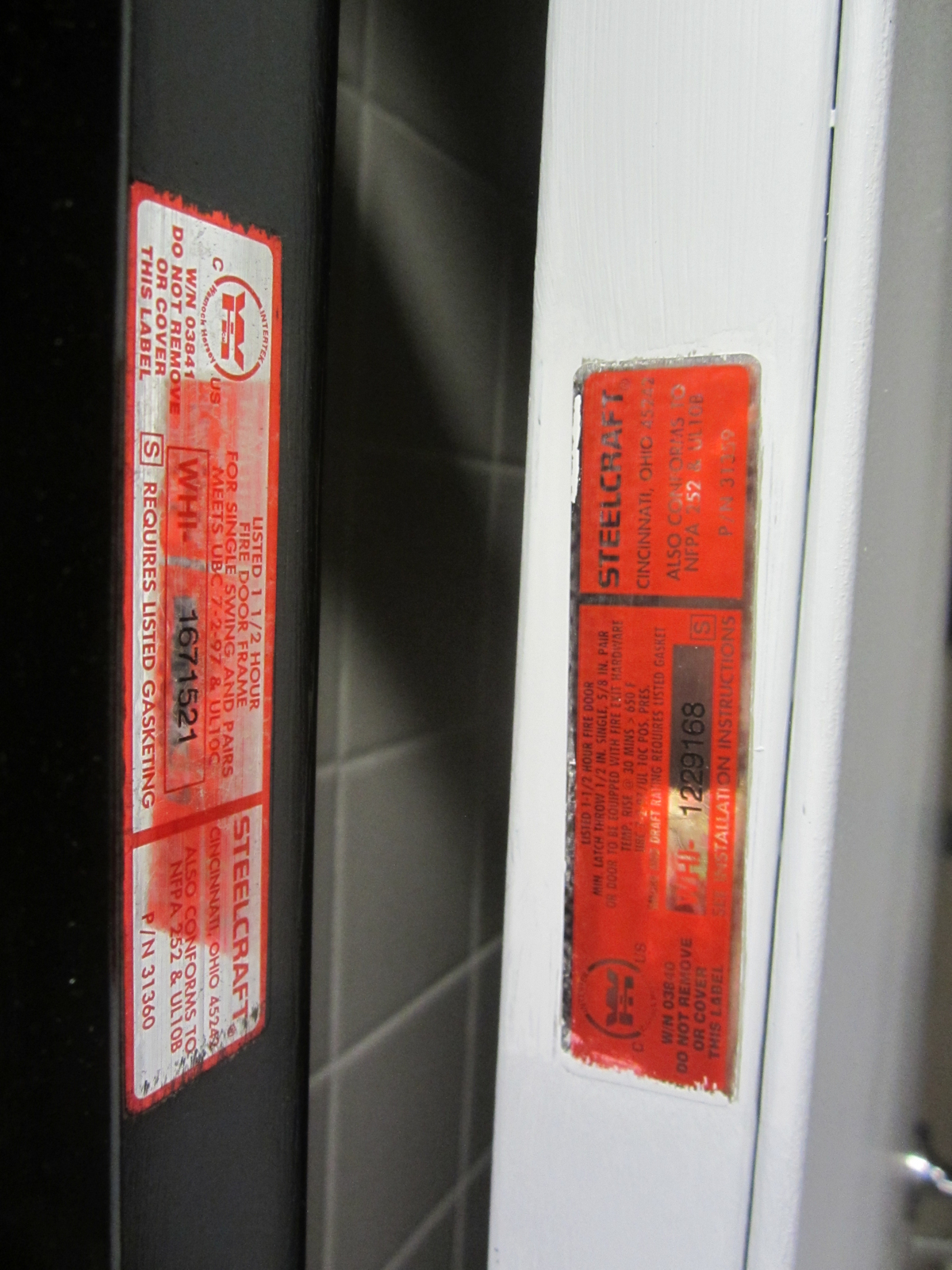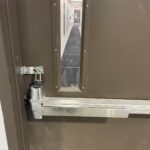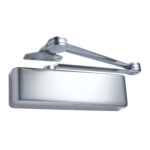Warning: This might be one of those posts that makes your head hurt, but I will do my best to break it down.
 A while back, I wrote about a problem that was being experienced by many health care facilities, where the AHJ would not allow labeled fire doors or frames in locations where fire door assemblies were not required. I literally can not believe that I wrote that post 3 years ago, but here it is. If you’re not familiar with the problem, you can get all of the background info from that post, but the gist is this:
A while back, I wrote about a problem that was being experienced by many health care facilities, where the AHJ would not allow labeled fire doors or frames in locations where fire door assemblies were not required. I literally can not believe that I wrote that post 3 years ago, but here it is. If you’re not familiar with the problem, you can get all of the background info from that post, but the gist is this:
There is a section of NFPA 101 that requires life safety features to be maintained or removed if not required by code. The motivation behind this section is that if a building occupant sees a life safety feature and assumes that it is functional, they might make decisions based on that assumption. For example, if I live in an apartment and I see that there is a sprinkler system, I may shelter in place during a fire based on the protection provided by the sprinkler system. But maybe the building owner shut down the sprinkler system because of a leak and never repaired it. Even if the building pre-dates the sprinkler requirements and the sprinkler system is not mandated by code or local ordinance, NFPA 101 requires the system to be maintained or removed, so that I am not making life-or-death decisions based on bad assumptions.
The big debate was whether a label on a fire door or frame is something that would be obvious to the public, and might cause someone to assume that they would be protected during a fire. If the door was labeled, but was not required to be a fire door assembly, the building occupant would not have the expected protection provided by a complete and code-compliant fire door assembly in a wall that is a fire barrier. Maybe the door has a label, but is not self-closing or self-latching, or does not have the proper glazing, or the wall does not offer the same level of fire protection shown on the door label.
The general consensus was that most building occupants would not notice the fire door label, or understand the implications, but some AHJs have continued to require fire door labels to be removed if not required. Some AHJs were also requiring the fire door assembly label to match what was required for that location – no more, no less. So if a 45-minute door was required, their interpretation was that a 90-minute door could not be installed. This was a huge problem, because it is not uncommon for a fire door assembly component to have a higher rating than what is required, and NFPA 101 does not prohibit this practice, or prohibit the installation of a labeled fire door where a fire door is not required. (The other model codes do not prohibit this either.)
I’m writing this post because there has been some progress toward clarifying this in the Life Safety Code. In this brief video, Greg Harrington from NFPA answers a question that sounds like it could have come directly from me or an iDigHardware reader:
Greg mentions some proposed changes to NFPA 101, and that’s what I wanted to share with you. Annex A of the Life Safety Code already makes it pretty clear that fire door labels are not intended to be considered a life safety feature that is obvious to building occupants, but a change has been proposed that would clarify this in the code instead of just in the annex. You can read more about the proposal on page 18 of this document, but this is the proposed change:
4.6.12.4*Where a door or door frame that is not required to be fire protection-rated is equipped with a fire protection listing label, the door and the door frame shall not be required to meet NFPA 80.
I would interpret this proposed change to mean that the extraneous labels can remain, without requiring the door assembly to be maintained as a fire door. With that said, removing unneeded labels can help to avoid confusion. Note that the 2021 code development cycle is still in progress, and it may take years for the next edition to be adopted in a particular jurisdiction, but this change may help clarify the intent of the Life Safety Code.
If you have had experience with this issue, please share your insight in the reply box!
You need to login or register to bookmark/favorite this content.





Latches are marked at the factory with the F or dot that indicates they may be used in a fire rated assembly, and manufacturers do not offer a non-marked latch.
An assumption that a fire rated door, frame or hardware item implies an opening needs to be fire rated is a bad assumption. I understand the challenges of determining which doors to inspect. The solution to that problem is to review the original fire protection plan, and if that plan is not available- or more commonly out of date due to A&A works- it needs to be recreated. Labels are not a shortcut for that important process.
my 2 cents
At an older University/College or large Institutions where you have multiple buildings, the labels were mechanically attached to the door and frame. Over time, these buildings have been renovated and equipped with new fire suppression systems, consequently lowering the 60/90 min. opening label requirements to either 20 min. or eliminating the ratings. It is not feasible to remove, fill the holes and refinish these openings. Upon annual Fire Door Assembly Inspections, the openings label requirement changes are recorded and inspected as required. Having a door exceed the openings rated requirements are generally known by the AHJ, FDAI and the Bldg. owners upon completion of the inspections.
If an AHJ requires the removal of a fire label because it’s not required on an assembly, who is authorized to do so? The owner?
As far as I know, there are no limitations in the codes or standards on who can remove the label. So the owner can remove one, but they’d better make sure that it’s definitely not needed because they are not authorized to put it back on.
– Lori